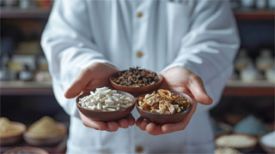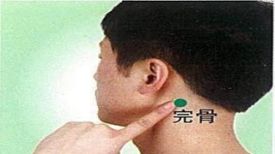The main function of the gallbladder is to store and excrete bile, while bile plays a role in promoting absorption and digestion.
After we eat the food, the gallbladder will excrete bile, allowing it to participate in the digestion of food. At the same time, the gallbladder also needs to do some work of purifying bile.
In the process of purifying bile, if the workload is overloaded, it will cause more cholesterol and bilirubin crystals to nucleate in the bile.
Over time, it can lead to the formation of gallstones, which in traditional Chinese medicine is known as "harvesting juice from a fire.".
These small stones stimulate the gallbladder wall for a long time, and people will feel abdominal distension and pain.
If gallbladder preservation and stone removal are adopted, inflammation in the gallbladder still exists, and its cause has not disappeared, making it easy for new stones to form continuously in the later stage.
So, its postoperative recurrence rate is relatively high, and gallbladder preservation and stone removal have not eliminated the factors and locations of gallbladder stone formation.
Without addressing the causes of stone formation, hastily preserving the gallbladder will inevitably lead to a higher risk of stone recurrence after surgery.
Don't underestimate the risks that small stones bring to us. Residual small stones may fall into the common bile duct, leading to gallstone blockage and entrapment.
It may also induce biliary pancreatitis, ultimately increasing the risk of developing gallbladder cancer. Why? Although the gallbladder is preserved, clinical evidence suggests that gallbladder inflammation cannot completely disappear, and the pathways and risk factors for its transformation into cancer still exist.
If these signals appear in the body, you should be extra careful when chronic cholecystitis comes to you.
Firstly, eating greasy food may cause nausea, acid reflux, bloating, and possible hiccups.
Secondly, there is persistent dull pain in the upper right abdomen, accompanied by pain in the right scapula.
Thirdly, pain in the gallbladder area, also known as bile stasis.
Fourthly, ultrasound indicates that the gallbladder wall has become rough and thickened, and stones have appeared.
How to maintain correct lifestyle habits in daily life?
Firstly, do not eat a high-fat, high sugar, and high carbon water diet frequently. The three high foods can lead to excessive cholesterol intake, making it easier to form stones in the gallbladder.
Secondly, do not skip breakfast for a long time, because the bile secreted by the human liver is concentrated in the gallbladder, and its concentration will reach a high peak in the morning.
If breakfast is eaten normally, the gallbladder will expel bile to aid in digestion. However, if you skip breakfast or eat irregularly, it increases the time for bile concentration and can easily lead to stones.
Thirdly, immediately lying on the sofa after a meal, the body appears curled up, with high pressure in the abdominal cavity and limited gastrointestinal motility, which is not conducive to the digestion and absorption of food.
It is also not conducive to bile excretion, and even seriously affects the reabsorption of bile acids.
Fourthly, prolonged sitting without movement. If you sit for a long time without moving, the contraction function of the gallbladder muscles will deteriorate, affecting the excretion of bile, resulting in bile stasis and creating conditions for the formation of gallstones.
A healthy person will have a better life, so taking good care of one's own health is to start a better life. Come on!
When youre full, youll feel bloating and pain in your stomach. Be careful if there are stones in your gallbladder
Release time:2024-06-03 12:58:56
Reading:199
Word Count:3601
Subscribe to email


